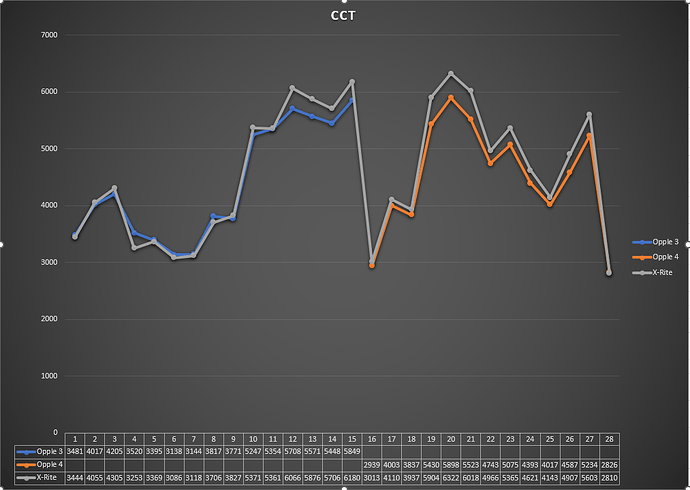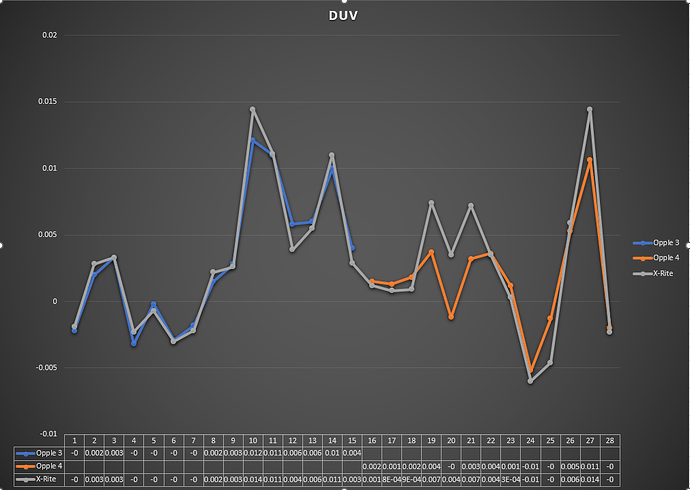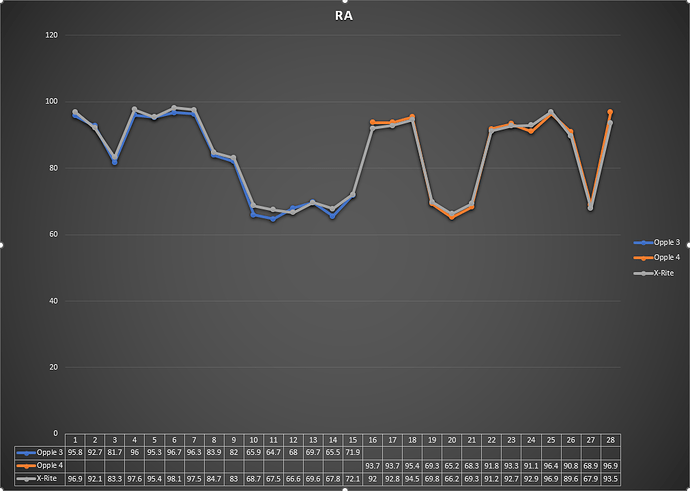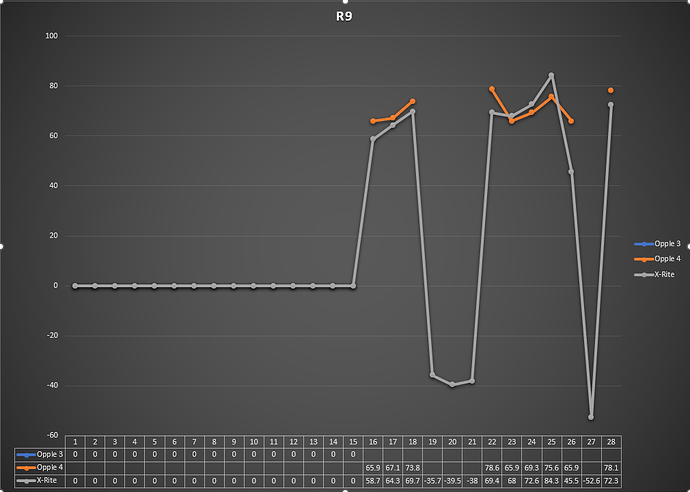Thank You!
data pairs:
line 1: Xrite
line 2: Opple 4
3013K, Duv 0.0012, Ra 92.0, R9 58.7
2939K, Duv 0.0015 (+25%), Ra 93.7, R9 65.9 (+12%)
4110K , Duv 0.0008, Ra 92.8, R9 64.3
4003K, Duv 0.0013 (+63%), Ra 93.7, R9 67.1
3937K, Duv 0.0009, Ra 94.5, R9 69.7
3837K, Duv 0.0018 (+100%), Ra 95.4, R9 73.8
5904K, Duv 0.0074, Ra 69.8, R9 -35.7
5430K, Duv 0.0037 (-50%), Ra 69.3, R9 —
6322K, Duv 0.0035, Ra 66.2, R9 -39.5
5898K, Duv -0.0012 (-133%), Ra 65.2, R9 —
6018K, Duv 0.0072, Ra 69.3, R9 -38.0
5523K, Duv 0.0032 (-44%), Ra 68.3, R9 —
4966K, Duv 0.0035, Ra 91.2, R9 69.4
4743K, Duv 0.0036, Ra 91.8, R9 78.6 (+13%)
5365K, Duv 0.0003, Ra 92.7, R9 68.0
5075K, Duv 0.0012 (+300%), Ra 93.3, R9 65.9
4621K, Duv -0.0060, Ra 92.9, R9 72.6
4393K, Duv -0.0052, Ra 91.1, R9 69.3
4143K, Duv -0.0046, Ra 96.9, R9 84.3
4017K, Duv -0.0013 (+72%), Ra 96.4, R9 75.6 (-10%)
4907K, Duv 0.0059, Ra 89.6, R9 45.5
4587K, Duv 0.0053, Ra 90.8, R9 65.9 (+45%)
5603K, Duv 0.0144, Ra 67.9, R9 -52.6
5234K, Duv 0.0106 (-26%), Ra 68.9, R9 —
2810K, Duv -0.0023, Ra 93.5, R9 72.3
2826K, Duv -0.0020, Ra 96.9, R9 78.1 (+8%)
============
seems the Opple 4 DUV is unreliable
in some cases it reads high, in other cases it reads low
and seems the R9 does not work for Low CRI… on my Opple 4 it gives a wrong positive number… on McBob’s it gives no number just a dash —
On one sample the Opple 4 gives an R9 that is 45% higher than the Xrite…



